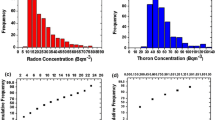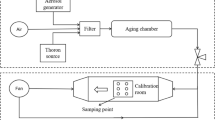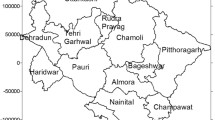Abstract
The long-term stability and homogeneity of thoron progeny are key to the performance of a thoron calibration chamber, which is vital to quality assurance in measuring thoron progeny. It is difficult to build a stable and high level of thoron progeny because the half-life of 212Pb is long. Thus, a stable and efficient compensation system is necessary to compensate for the loss of thoron progeny caused by sampling, decay, and wall deposition. In this paper, a thoron progeny compensation system at the University of South China is optimized, and a suitable ventilation rate regulation method is developed that can effectively improve the activity level and stability of output rate for thoron progeny. The experimental results show that the 212Pb activity output rate increases by 28% and that the output rate is more stable. Under these conditions, the time for the output rate of ThB activity to reach stability is reduced by 33%, and for ThC, the time to reach stability is reduced by 40%. Furthermore, the concentration ratios of ThC and ThB range from 0 to 0.82.






Similar content being viewed by others
References
UNSCEAR (2008) Source and effects of ionizing radiation. United Nations, New York
Rottger A, Honig A, Arnold D (2009) The German thoron progeny chamber—concept and application. Appl Radiat Isot 67:839–842
Rottger A, Honig A, Dersch R et al (2010) A primary standard for activity concentration of 220Rn (thoron) in air. Appl Radiat Isot 68(7–8):1292–1296
Kobayashi Y, Tokonami S, Takahashi H, Zhuo WH et al (2005) Practicality of the thoron calibration chamber system at NIRS, Japan. In: International congress serie, pp 281–282
Sorimachi A, Ishikawa T, Tokonami S (2014) Development of an aerosol chamber for calibration of 220Rn progeny detectors. Rev Sci Instrum 85(9):095104
Zhao C (2014) Methods for the Calibration and Measurements of Thoron Concentrations. Fudan University, Yangpu (in Chinese)
Zhao C, Zhuo W, Chen B et al (2010) Characteristic and performance of a simple thoron chamber. Radiat Prot Dosim 141(4):444–447
Xiao D, Ling Q, Pan Z et al (2002) A simple 220Rn chamber for the calibration of passive and integrated 220Rn dosimeter. At Energy Sci Technol 36(1):89–92
Xiao D, Zhou J, Qiu S (2012) The research on the measurement and calibration of thoron and its daughters. In: Progress report on nuclear science and technology in China, vol 2. Proceedings of academic annual meeting of China Nuclear Society in 2011, No. 5-radiation protection sub-volume
He Z (2014) Study on technology of regulating and controlling 220Rn daughter in 220Rn chamber. University of South China, Hengyang (in Chinese)
Qiu S (2006) Calibration of a 220Rn flow-through source. Radiat Environ Biophys 45(3):215–220
Cheng YS, Chen TR, Yeh HC et al (2000) Intercomparison of activity size distribution of thoron progeny and a mixture of radon and thoron progeny. J Environ Radioact 51(1):59–78
He Z, Xiao D, Lv L, Zhou Q, Xijun W, Shan J (2017) Stable control of thoron progeny concentration in a thoron chamber for calibration of active sampling monitors. Radiat Meas 102:27–33
Kang X, Xiao D, Li J (2008) The research on the measurement and calibration of thoron and its daughters. Nucl Technol 31(12):926–930
Zhou Q, Zhao G, Xiao D (2009) Alpha spectrum superposition method for measuring radon and thoron progenies in air. Nucl Technol 32(06):164–168
Porstendörfer J (1984) Behaviour of radon daughter products in indoor air. Radiat Prot Dosim 7(1–4):107–113
Porstendöfer J (1994) Properties and behaviour of radon and thoron and their decay products in the air. Aerosol Sci 25(2):219–263
Mercer T (1976) The effect of particle size on the escape of recoiling Ra B atoms from particulate surfaces. Health Phys 31:170–175
Author information
Authors and Affiliations
Corresponding author
Additional information
Publisher's Note
Springer Nature remains neutral with regard to jurisdictional claims in published maps and institutional affiliations.
Rights and permissions
About this article
Cite this article
Li, W., Zhou, Q., He, Z. et al. Optimization of the thoron progeny compensation system of a thoron calibration chamber. J Radioanal Nucl Chem 324, 1255–1263 (2020). https://doi.org/10.1007/s10967-020-07180-y
Received:
Published:
Issue Date:
DOI: https://doi.org/10.1007/s10967-020-07180-y




